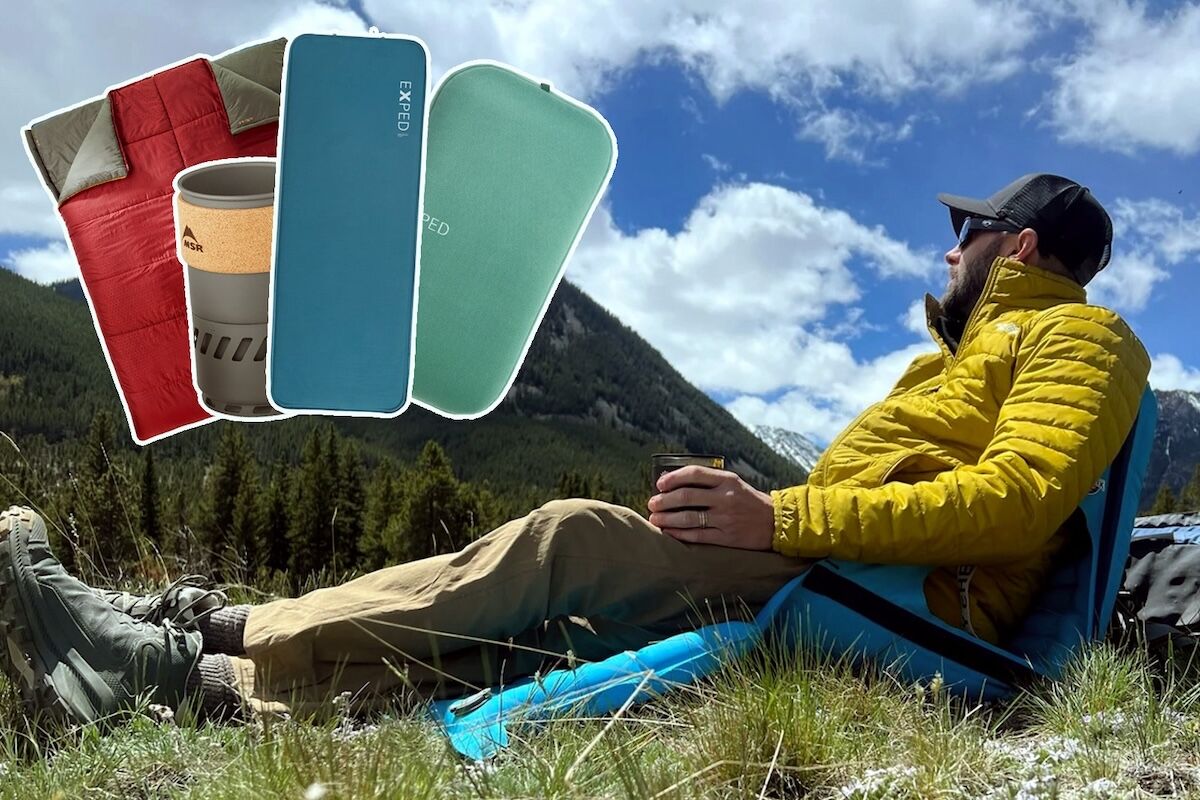SPACETOP FOR WINDOWS: INVISIBLE MONITORS THAT FOLLOW YOU ANYWHERE
SPACETOP FOR WINDOWS: INVISIBLE MONITORS THAT FOLLOW YOU ANYWHEREThe laptop hasn’t fundamentally changed in decades. Screens got thinner, processors faster, but we still hunch over the same basic form factor that emerged in...
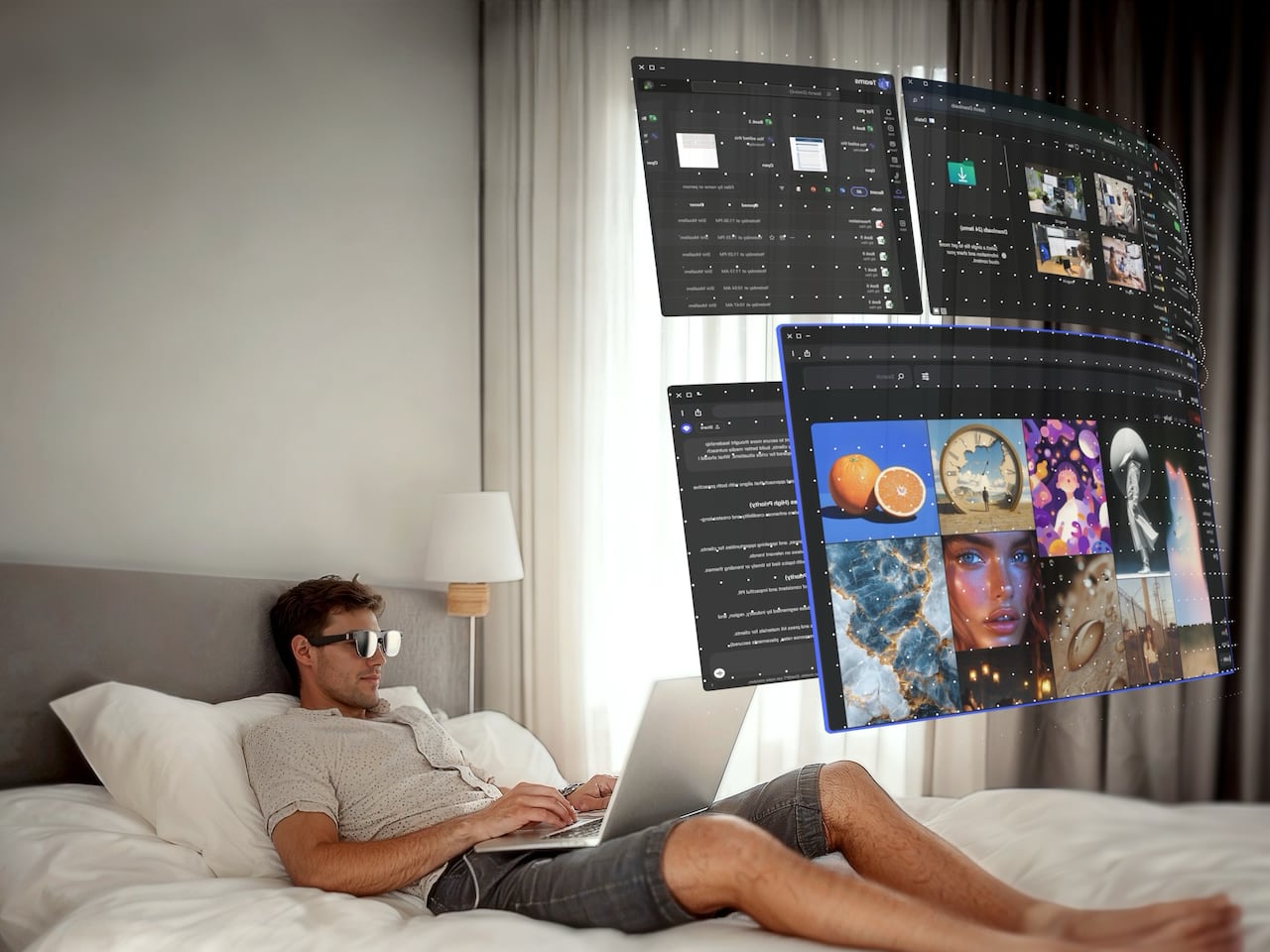
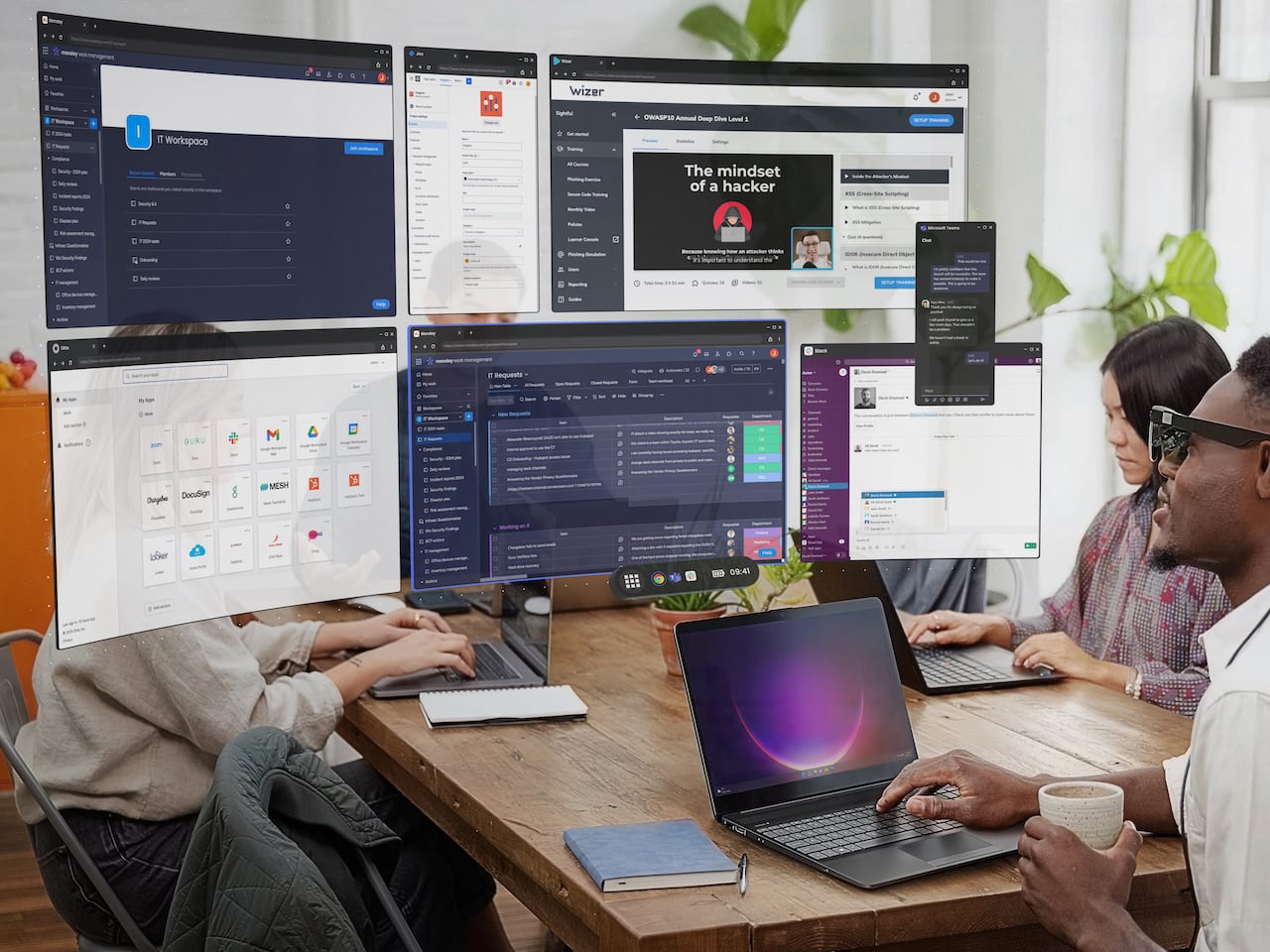
The laptop hasn’t fundamentally changed in decades. Screens got thinner, processors faster, but we still hunch over the same basic form factor that emerged in the early 1990s. Sightful’s Spacetop for Windows aims to shatter that paradigm completely. It reimagines what it means to have a workspace in the first place.
Designers: Spacetop by Sightful and XREAL Air Ultra 2 by XREAL
Spacetop creates a massive 100-inch virtual display that exists only in your field of vision. No physical monitors. No cramped screen. Just your laptop keyboard and an expansive digital canvas floating in front of you. The system pairs lightweight AR glasses with powerful software to transform any environment into your personal command center. Coffee shops, airplanes, client offices, and even outdoor spaces become viable workspaces without sacrificing screen real estate or privacy.
This Windows launch signals Sightful’s evolution from hardware maker to software platform. The original Spacetop ran on Android as an all-in-one solution. This new iteration brings the spatial interface to Windows machines that professionals already use. It liberates your laptop from the constraints of physical displays.
“Spacetop is exactly why AI PCs were designed. It unlocks the true power of the architecture,” explains Tamir Berliner, Sightful’s CEO and co-founder. The timing aligns perfectly with manufacturers such as Dell, HP, and Lenovo shipping laptops equipped with dedicated neural processing units designed specifically for spatial computing tasks. The future already sits in inventory.
Air instead of Aluminum
The hardware component of Spacetop for Windows centers around XREAL Air Ultra 2 glasses. These aren’t bulky VR headsets or conspicuous face computers. They weigh just 83 grams, about the same as a pair of sunglasses, making them practical for all-day wear. The lightweight design addresses one of AR’s biggest barriers to adoption: comfort. You can actually forget you’re wearing them.

The expansive digital workspace they create will stick in your memory. Spacetop’s interface allows multiple applications to run side by side in a field of view that makes laptop screens feel tiny. The system utilizes keyboard shortcuts for window management, allowing for familiar workflows while eliminating the need for constant window dragging in limited screen space.
The visual clarity adjusts to your environment. Under bright office lights or in natural sunlight outdoors, the display remains visible and sharp. This adaptability makes Spacetop genuinely mobile. You won’t search for the right lighting conditions or angle screens away from glare. Your workspace follows you, adapting as needed.
Spacetop transforms your physical posture. Traditional laptops require users to look down, leading to neck strain and poor ergonomics. The AR display is positioned at eye level, promoting a healthier posture. After hours of use, the difference becomes immediately apparent. Your neck doesn’t ache. Your shoulders stay relaxed. You look forward, not down.
Windows Without Limitations
Spacetop for Windows works seamlessly with your existing Windows installation, providing access to all your existing applications. CAD software, creative suites, productivity tools, development environments – they all function normally within this expanded visual canvas.
This integration solves the biggest limitation of the original Android-based Spacetop: software compatibility. Users can run full desktop applications with local storage and processing. The system supports complex workflows previously impossible in the earlier version.
The interface maintains Windows’ native interaction patterns while enhancing them with spatial awareness. Windows can be positioned throughout your field of view, creating natural zones for different tasks. Reference materials might float to your left while your main workspace occupies the center. Communication tools could sit to the right, always visible but not dominating your attention.
Security concerns typically plague mobile workers. Spacetop addresses this with the private nature of the display. Only you can see the contents of your screen. No need for privacy filters or constant awareness of who might be looking over your shoulder. Your sensitive data remains visible only to you, regardless of how public your physical location might be.
Hardware Requirements and Availability
Spacetop for Windows requires modern AI-capable machines with dedicated NPUs, like the Dell XPS (Core Ultra 7), HP EliteBook, Lenovo Yoga Slim, Asus Zenbook, Acer Swift Go 14, and Surface Laptop for Business. These mainstream professional laptops represent where the market already heads.
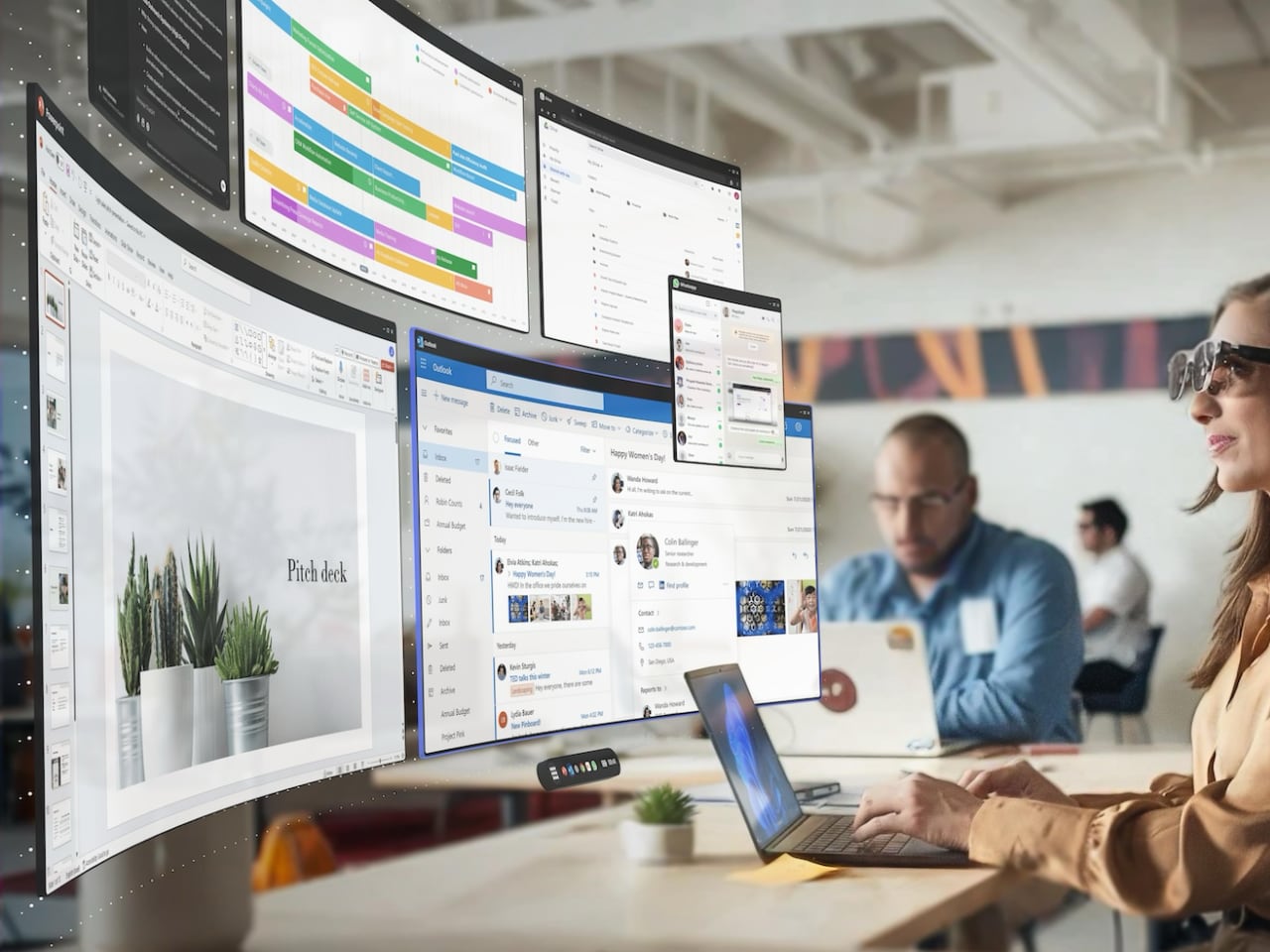
Market analysts at Canalys project that 19 percent of PCs shipped in 2024 will feature AI capabilities, with that number reaching 60 percent by 2027. HP expects one in four of its PCs to include these features by 2025. Sightful leverages an existing trend in computing architecture.
The complete Spacetop for Windows bundle costs $899, including the XREAL Air Ultra 2 AR glasses and a 12-month subscription to the Spacetop platform. After the first year, the annual renewal runs $200. For those who wear prescription glasses, lens inserts cost $50 for single vision and $150 for progressive options.
This pricing positions Spacetop as a professional tool. Many businesses already spend similar amounts on external monitors, docking stations, and ergonomic accessories for remote workers. Spacetop replaces all of those with a single solution that fits in a laptop bag.
Expanding Globally Through Partnerships
Sightful’s Windows launch coincides with its first major global expansion. The company has secured key partnerships to bring Spacetop to international markets, starting with Germany. Deutsche Telekom will handle European B2B distribution, while SHI manages enterprise deployment in North America. Intel serves as a platform partner, ensuring long-term compatibility and co-development opportunities.
These partnerships reflect Sightful’s focus on professional and enterprise markets. “Spacetop is for people who need to work securely, comfortably, and powerfully, today,” emphasizes Tomer Kahan, COO and co-founder. This technology addresses the immediate needs of mobile professionals who demand a high-quality workspace.
Early enterprise trials have yielded promising results. Amy Troxell of SHI notes, “The reactions within SHI, our partners, and customers have had while experiencing Spacetop is astounding. There’s just nothing like it.” Deutsche Telekom’s Dr. Maximilian Ahrens describes it as redefining mobile productivity, offering a secure, digitized workspace that scales with the demands of modern business.
Bridging Present and Future
Spacetop addresses a pain point nearly every mobile professional experiences: limited screen space while traveling. The focus on productivity distinguishes Spacetop from other AR offerings. This isn’t about watching movies or playing games in new ways. It enables real work without compromise. The interface supports hours of focused attention rather than brief, casual interactions.
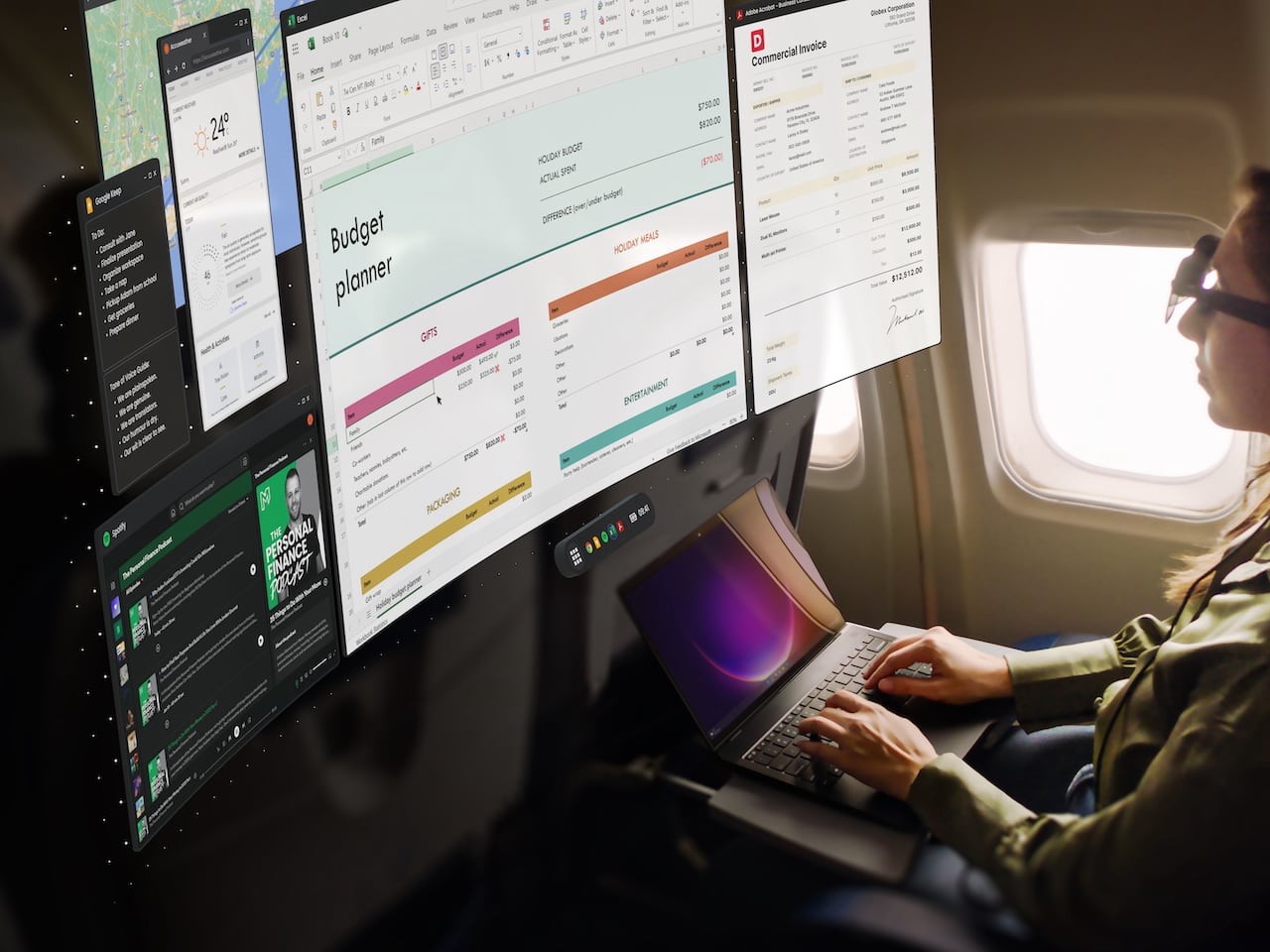
By building on Windows rather than creating a proprietary environment, Sightful removes a major adoption barrier. Users don’t need to learn new workflows or abandon favorite applications. Their existing digital tools gain more room to breathe, expanding beyond the physical limitations of laptop displays.
This pragmatic approach may prove revolutionary. By solving a specific, widespread problem without requiring users to reinvent their digital lives, Spacetop creates a viable path for spatial computing to enter mainstream professional use.
The future of work thrives on flexibility and adaptability. Spacetop for Windows takes that principle to its logical conclusion. Your workspace isn’t a place. It isn’t even a device. It exists wherever you happen to be, with all the digital tools you need floating right before your eyes. That represents a fundamental shift in how we think about technology, productivity, and physical space.
The post SPACETOP FOR WINDOWS: INVISIBLE MONITORS THAT FOLLOW YOU ANYWHERE first appeared on Yanko Design.













































